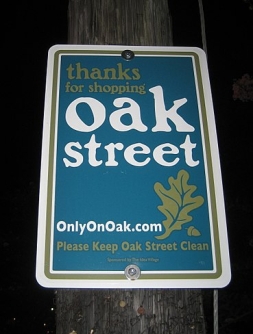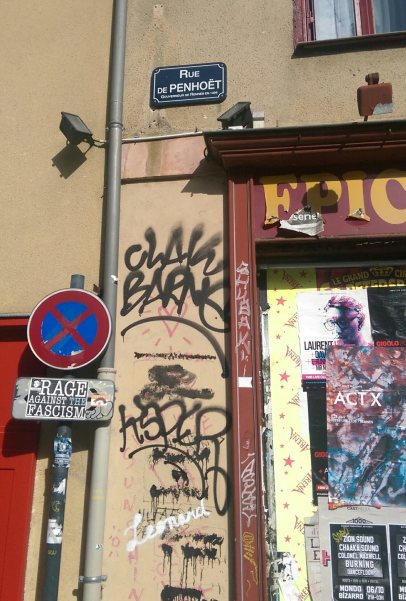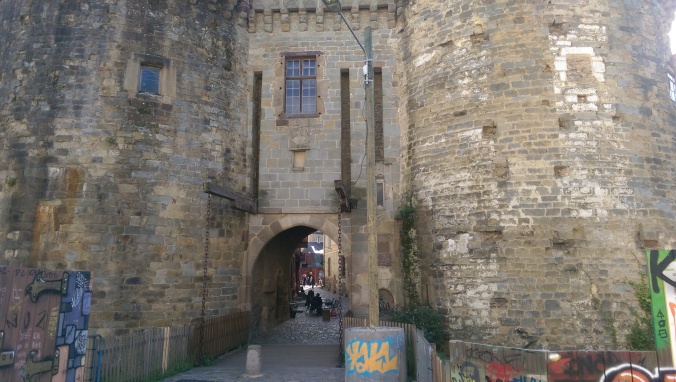While I’m certain that I was far from the first to notice or say such a thing, one of my first observations about American suburbia as a teenager (which was rooted in dark humor but disturbingly true nonetheless), is that far too many of the streets were named after either the trees we killed to make way for them and far too many of the towns seemed to be named for the Native people that we killed in order to “settle” those areas.

Oak Street, New Orleans. Photo by Infrogmation.
And in my extensive travels through and across the United States over the next two decades, including but definitely not limited to five cross-country journeys by car, the observation only stood out more and more. The tendency wasn’t limited to streets or towns, but also extended to schools, gated communities, public parks, the list goes on and on. If I had a dollar for every time I drove past something called “Mohawk Estates” located on “Pine Street”, I’d probably have enough money to start a decent reparations fund as well as a tree-planting operation.
But to be frank, all this is quite expected from a colonial-settler state which was “founded” on stolen land under capitalist principles and the doctrine of Manifest Destiny.
In contrast, one of the things that initially made me fall in love so hard with France is that no matter what city you are in, the streets are mostly named after either notable historical figures, significant places, or significant historical events. Much of the time such namings are localized – many of the streets in Rennes, for example, are named after former mayors or governors of this city – but many of them are also named for nationally or internationally known figures, and not always French figures either. Rennes has streets named after General George S. Patton (who liberated Rennes from Nazi occupation in 1944), Mother Teresa, and Pablo Neruda, among many others.
But for me, it’s the streets named after local figures that interest me the most. Given that this city is over 2000 years old, any given street name potentially contains a fascinating story, which makes every street in itself a miniature history lesson, especially for a foreigner like myself. And some of the stories behind these historical figures are priceless in terms of capturing the essence and spirit of this city.
One of the greatest examples of this can be found literally right outside my door, on the street I live on, rue de Penhoët.
* * * * *

The street itself dates back to the medieval era, and was first called rue de la Fracasserie due to the constant noise that came from it being a blacksmith’s row, and later was named rue de la Poulaillerie after a poultry market which was held there until the beginning of the 20th century. Many of the current buildings on the street date from the time it was a blacksmith’s row, and the street contains the smallest building in all of Rennes, which dates back prior to 1720. After the poultry market closed, the residents of the street petitioned the city to rename the street, and it was then given its current name, rue de Penhoët, by the municipal council of Rennes in 1903.
Guillaume de Penhoët (1325-1404) was born in Plouégat-Guérand in Finistère, the son of a nobleman. The event which guaranteed him a spot in the collective memory of Rennaises came during his tenure as the governor of Rennes in the 1350s, a position to which he was appointed after a career as the captain of the Royal Fleet. During the War of the Breton Succession (1341-1365), which was fought between two noble families over control of the then-independent Duchy of Bretagne, Rennes (then a walled city) was besieged by English forces from 1356-1357. Knowing full well that the townspeople inside the walls were suffering from severe famine, the English decided to graze approximately 3,000 pigs right outside the Porte Mordelaise, the main gate to the walled city, in the hopes that the desperate townspeople would open the gates and pursue the pigs in desperation, allowing the British to then enter and overtake the city.

The Porte Mordelaise
But de Penhoët outsmarted the British. He hung a live sow from a postern near the main gate. The squeals of the sow caused the grazing pigs to rush the gate, at which time he opened the gate and let the pigs run through before the British had any idea what had happened. The townspeople, saved from famine, mocked their besiegers from the ramparts. The siege was lifted a short time after, following a treaty between England and France.
* * * * *
After I learned this fascinating tale, an important question still remained for me: But why were the British involved in a war between two Breton houses of nobility?
The War of the Breton Succession was in itself a part of the Hundred Years’ War (1337-1453), which was not a single war but actually a series of wars between England and France over the control of and succession to the French throne. The War of the Breton Succession was not only a battle over the land of Bretagne itself, but an auxiliary theatre in a much larger conflict in which not only royal allegiances but Salic law became a primary issue.
In short, the two houses that fought for control of Bretagne, the House of Blois and the House of Montfort, had a fundamental difference between them in the House of Blois claimed the right to the Duchy of Bretagne based on female succession, while the House of Montfort claimed the right to the Duchy based on a male heir.
The two houses had been interconnected through marriage and divorce throughout the prior century, and both houses had ancestral links to England. When John III, Duke of Bretagne, was near death in 1334, he refused to cede the Duchy to his half-brother, John of Montfort, due to his hatred of Montfort’s mother, John III’s stepmother. Meanwhile, his niece Joanna had married into the House of Blois, which granted her and her husband Charles of Blois a potential claim to the Duchy of Bretagne, but John III died before the matter could be resolved.
After his death, both John of Montfort and Charles of Blois claimed the right to the Duchy. The French king supported the House of Blois, which laid claim based on Joanna’s relationship to John III, while the English king, justifying his choice based on Salic law (which forbid inheritance based on female succession), supported the house of Montfort. This dispute, which originated as an internal affair, soon became a significant conflict within the larger political turmoil of the Hundred Years’ War. While the Hundred Years’ War was eventually won by the French Crown, the War of the Breton Succession was won by the House of Montfort in 1365, which was backed by the British. But the British victory did not include a successful invasion of Rennes, thanks in large part to the actions of Guillaume de Penhöet.
And although it cannot be historically argued that the larger political motivations regarding succession had any bearing on the actions or loyalties of Guillaume de Penhöet, the fact remains that aside from his heroic actions that halted the famine in Rennes and prevented a siege by the English, he was also indirectly fighting in the name of female succession.
(This is the first of what I hope to find the motivation to continue as a series of vignettes about the history of Rennes based on the street names…)